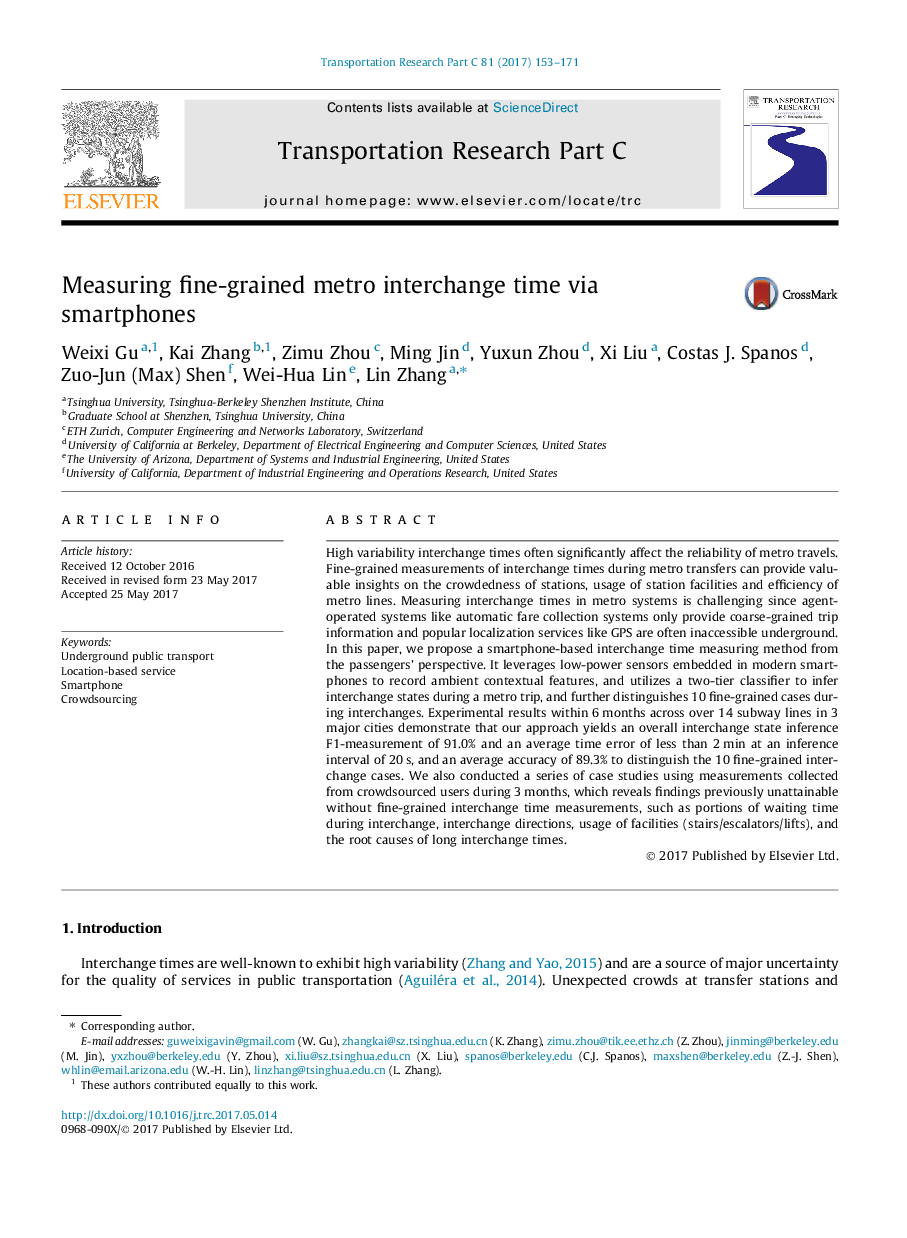| Article ID | Journal | Published Year | Pages | File Type |
|---|---|---|---|---|
| 4968410 | Transportation Research Part C: Emerging Technologies | 2017 | 19 Pages |
Abstract
High variability interchange times often significantly affect the reliability of metro travels. Fine-grained measurements of interchange times during metro transfers can provide valuable insights on the crowdedness of stations, usage of station facilities and efficiency of metro lines. Measuring interchange times in metro systems is challenging since agent-operated systems like automatic fare collection systems only provide coarse-grained trip information and popular localization services like GPS are often inaccessible underground. In this paper, we propose a smartphone-based interchange time measuring method from the passengers' perspective. It leverages low-power sensors embedded in modern smartphones to record ambient contextual features, and utilizes a two-tier classifier to infer interchange states during a metro trip, and further distinguishes 10 fine-grained cases during interchanges. Experimental results within 6Â months across over 14 subway lines in 3 major cities demonstrate that our approach yields an overall interchange state inference F1-measurement of 91.0% and an average time error of less than 2Â min at an inference interval of 20Â s, and an average accuracy of 89.3% to distinguish the 10 fine-grained interchange cases. We also conducted a series of case studies using measurements collected from crowdsourced users during 3Â months, which reveals findings previously unattainable without fine-grained interchange time measurements, such as portions of waiting time during interchange, interchange directions, usage of facilities (stairs/escalators/lifts), and the root causes of long interchange times.
Related Topics
Physical Sciences and Engineering
Computer Science
Computer Science Applications
Authors
Weixi Gu, Kai Zhang, Zimu Zhou, Ming Jin, Yuxun Zhou, Xi Liu, Costas J. Spanos, Zuo-Jun (Max) Shen, Wei-Hua Lin, Lin Zhang,
